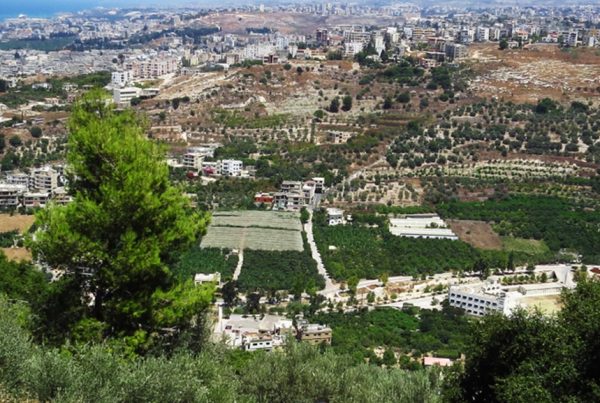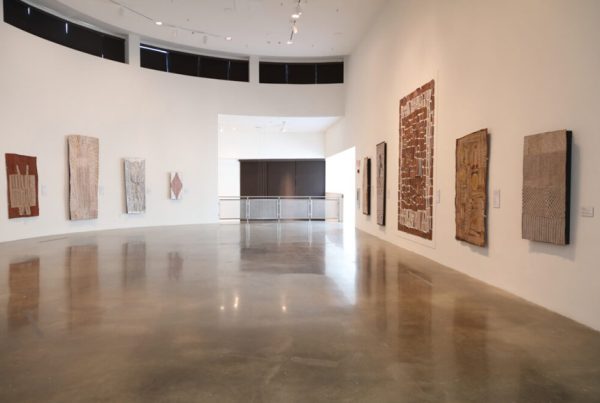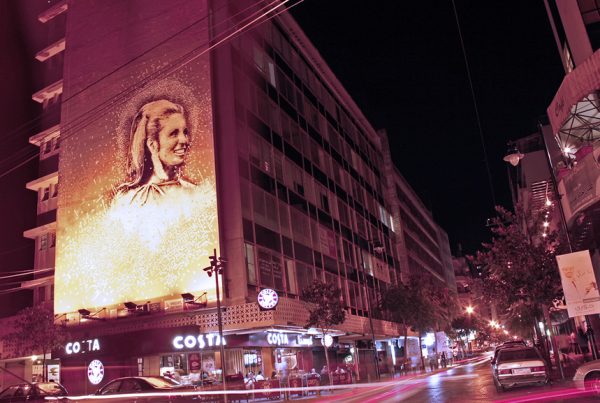Do not hesitate to visit Byblos, as it is the most beautiful tourist place in Lebanon
Many people, when they read advertisements for tourism in Byblos, Lebanon, ask themselves this question: “What does Byblos have to spend my money on traveling and touring?” In fact, Byblos is the head of tourism in Lebanon as a whole. Rather, it has the specifications of the tourist area unless it meets in the Middle East in several regions together. This is not a matter of intimidation and exaggeration. Rather, it is a statement based on what Jbeil possesses in terms of natural and historical capabilities and elements that make it a more than wonderful shrine. This is exactly what we decided to discuss in this article, which we prepared in order to be an excellent guide to this charming region.
As Byblos, the presence of humans dates back to the sixth millennium BC. As well as the association of the Greeks with that wonderful city. Those Greeks who called it Byblos. This is in contrast to the name that was given to it by its inhabitants at the beginning, which is Jableh, which was soon changed to Jable and then to the current name Jbeil.
How to get to Byblos
Fortunately, Byblos is only a short distance from the Lebanese capital, Beirut. Only about 37 km and you are there. There are also two ways to reach Jbeil from Beirut. The first of them is a road linking Tripoli and Beirut, and the second is across the sea. Dear reader, you will find many public buses waiting to take you there via either of these two roads. As well as the possibility of using your own car to get there. Both ways are completely safe.
Historical Background of the City of Byblos
It is a very important thing that we need to discuss. This is because a large part of the tourists mainly travels to it with a desire to learn about this ancient history by seeing and contemplating the monuments in which it is located. Therefore, you must read this part well to know what these monuments indicate, dear tourist. Where we find that the story of Byblos begins in seventieth century BC. When a group of fishermen established it as a small village across the sea, they lived inside it in primitive small houses covered with limestone. These hunters made a set of stone tools and weapons that they used in their daily activities.
This and the matter develops after that, to find that those who live in that village have become somewhat strong funeral rituals, in which they bury the dead in stone pots. And even bury all his possessions with him. Time passes quickly until we reach the year 4000 BC and beyond. Where the region witnessed a strong commercial prosperity thanks to the timber it became owned. So it offered it to its neighbors in exchange for other goods that contributed to improving the standard of living of its residents. For example, but not limited to, Byblos provided the ancient Egyptian civilization with important wood for building ships and religious rituals, and in exchange for this, it obtained what Egypt is famous for, such as papyrus, gold, linen cloth, and alabaster.
After that the Amorites invaded the city and burned it. But they soon built it again after they settled it. Rather, they left excellent traces showing the progress and development of their lives. You will be happy to visit them a lot in the city without a doubt. Rather, the greatest evidence of the progress of that civilization is that they invented a writing system that Greece later learned from them and developed as an eternal language for its language, which later became the language of one of the greatest and most powerful civilizations in the world.
Hey, the story isn’t over yet. With the succession of civilizations, Byblos became coveted by each of them due to its strategic location on the Mediterranean, just like some of the Lebanese cities that currently exist. Therefore, the Assyrians, Babylonians, and Persians took control of it to gain sovereignty over the Mediterranean, as we mentioned above. This is what contributed to enriching the history of the region on the one hand and enriching it with more antiquities that contributed to attracting more tourists to it. On top of which, of course, is the castle that the Persians built in the city as their military base. Then Alexander the Great comes to conquer the world and of course occupy Byblos, which later becomes part of the giant Greek empire, not only at the level of governance, but also at the level of culture and language.
The Greek civilization was, of course, followed by the Roman civilization, to which Byblos later became part of its territory. It is a good era in terms of the traces it left in the place. And then there was the Byzantine civilization. Then the Arab Islamic conquest, which was followed by eras of Umayyad and Abbasid rule. After that, Byblos will be occupied by the Crusades, during which an edifice was established, which is now archaeological. After that, the period of the rule of the Mamluks and the Ottomans of the city occurred, and they probably left no traces. However, during that period, the population was very small, and many of the city’s monuments began to disappear.
When were the effects of Byblos discovered?
As we have already explained, many of the city’s antiquities, which date back to multiple historical eras, have disappeared due to the accumulation of layers of dust with time. However, since the nineteenth century, archaeological explorers aspired to excavate the region. And they were able to achieve amazing achievements in which many monuments were discovered. These operations continued until the seventies of the twentieth century. As it contributed to the city containing many monuments that raised its points balances in the world of tourism. To attract many tourists and thus become one of the most important sources of income for all of Lebanon.
The most important monuments in the city of Byblos
Byblos Castle
Its location is distinguished by the presence of many other landmarks before you reach the castle itself, such as statues and fountains dating back to the Roman era. We don’t think you’ll leave her without taking a ton of pictures of her. And then you will reach the castle, which will captivate you with its designs and size at first sight, without a doubt.
This and do not forget that the main gate at the site dates back to distant periods of history, up to the thirtieth century BC. It even has signs showing the invasion of the Amorites, whom we have already talked about above during the historical period. As for the castle itself, it dates back to the Persian era. Where you get to know the nature of the military doctrine of that empire and how it was organizing and defending at the time.
Letter l Temple
It is located near the Byblos Castle and dates back to 2700 BC. It seems that this temple was for omens to discover many statues in the place. This is in contrast to the magnificent Temple of Obelisks, which was also discovered, and suggests that these obelisks were for religious purposes as well.
Ein Elmalek
It is a spring that emerges from an inner part of the stones. It has been associated with the well-known Egyptian traditional myth (Isis and Osiris) that Isis visited this place and the nymphs carried water for her in that spring. But this is not only what distinguishes this tourist attraction, not even its beauty and charm in terms of its shape and the flow of water in it. Its distinction is also due to the presence of three houses next to it dating back to very ancient historical eras, some of which date back to the Stone Age, and some of which date back to half of the fourth millennium BC. It is absolutely amazing without a doubt.
Canaanite Castle
It is not a castle in the conventional sense. Rather, they are remnants dating back to the era of the Canaanites, the ancient Bronze Age, where the thirtieth century BC. However, what really distinguishes this castle is not the age of its buildings as much as it is the diversity of its ages. The castle, as previously mentioned, dates back to the Bronze Age. However, it has some edifices dating back to the era of the Amorites. As well as other tombs and houses dating back to the periods between the sixth millennium BC and the fourth millennium BC.
Baalah Temple
It is a temple dating back to 2700 BC. It is the period when the Amorites settled in the region. Where the building of the museum indicates the extent of the progress of that civilization architecturally without a doubt. Although the temple dates back to the Amorite period, it was subjected to many restorations in the Roman era in the Roman style due to the long period of its use, which amounted to about two thousand years.
The royal tombs in Byblos
It is a group of wonderful tombs that were discovered for the rulers of the city, and they are rich in archaeological and historical content, in addition to the discovery of nine ancient walls in the same area, which are also very impressive.
Crusader Castle
It was built during the Crusader occupation of the city from the stones of ancient monuments, as we mentioned above. You will be happy to roam inside it, especially since it will be available for visiting since eight in the morning, after paying the price of its entrance ticket, of course. This gives you a full opportunity to explore all its components and accessories, such as walls, towers, and the like. Therefore, you must not miss visiting it under any circumstances when you are a tourist for any purpose in Byblos.
Saint John Mark’s Church
It is an ancient church built in the twelfth century AD. Although it was destroyed by the British fleet in modern times, it was quickly restored in the nineteenth century. To return to its previous era in terms of buildings and breadth. Especially in that era when Prince Youssef Shihab El-Din added a new piece of land to that church as a gift to the Maronite. The church also increased in brilliance in the forties of the last century, after a bell tower was built in it during that period.
Two Defense Towers
It is one of the most beautiful landmarks in Byblos, not only for its historical importance. It was built in the Crusader era, when the European influence in the Middle Ages mixed with the Arab influence in the Levant in general. But it is also due to their wonderful location. As the Crusaders basically built them in the port as a protection for the city from any attack on it from the sea. However, now they have a picturesque location in terms of beauty that enables tourists to enjoy unforgettable sea views. Which is what the restaurants sought to exploit there. Hence, it is very spread out near this wonderful tourist attraction. So that after the end of your tours in the place, you can get some rest, recuperation, and delicious food in any of them.
After that, do not leave the area. Rather, he immediately went to visit the ancient Sultan Abdul Majeed Mosque. This distinguished mosque was built in the seventeenth century AD, and soon it was restored during the reign of Prince Yusuf Shihab al-Din in the eighteenth century AD. He is the same prince who granted the church of St. John Mark the land to expand it which confirms his interest in architecture. Which contributed greatly to preserving these antiquities for future generations. The mosque has many distinguished architectures that you will not stop examining and photographing with your eyes. The most famous of which is its unique octagonal dome.
Paleontology Museum
It is one of the most important and exciting tourist places in Byblos. But this is not only due to the fact that it is a free tourist place. But also for its unique, impressive content. It includes all the excavations discovered in the Byblos region. Where you find fossilized animals dating back millions of years, nature has contributed in one way or another to preserving them. It is important at the scientific level for those interested in geology. And a vital topic for tourists looking for all that is strange and wondrous in this world. Note: The place opens its doors to visitors from nine in the morning until one in the afternoon and from three in the afternoon until six in the evening.
Byblos City Wall
Its establishment dates back to the era of the Crusader occupation of Byblos. When you visit and explore it, you will find a number of towers. In addition to maintaining its length, which in some parts reaches 270 meters.
Church of Saydat Alnajat
It is a church built between the twelfth and thirteenth century AD. And that was on the ruins of an old Byzantine church. When you visit it, you will undoubtedly be dazzled by its huge pillars, which show the strength of the building. Not to mention, of course, her holdings, which she will not stop photographing due to her accuracy and strength of her craftsmanship.






